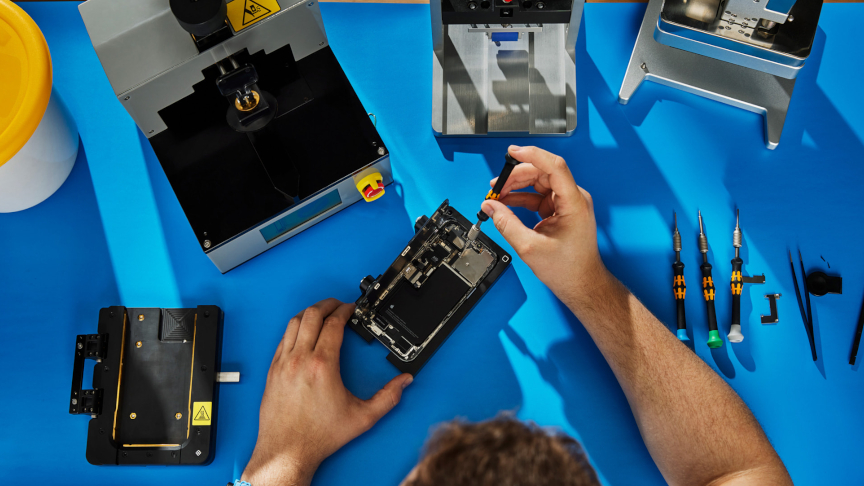Apple announced an upcoming enhancement to existing repair processes that will enable customers and independent repair providers to utilize used Apple parts in repairs.
Beginning with select iPhone models this fall, the new process is designed to maintain an iPhone user’s privacy, security, and safety, while offering consumers more options, increasing product longevity, and minimizing the environmental impact of a repair. Used genuine Apple parts will now benefit from the full functionality and security afforded by the original factory calibration, just like new genuine Apple parts.
“At Apple, we’re always looking for new ways to deliver the best possible experience for our customers while reducing the impact we have on the planet, and a key part of that means designing products that last,” said John Ternus, Apple’s senior vice president of Hardware Engineering. “For the last two years, teams across Apple have been innovating on product design and manufacturing to support repairs with used Apple parts that won’t compromise users’ safety, security, or privacy. With this latest expansion to our repair program, we’re excited to be adding even more choice and convenience for our customers, while helping to extend the life of our products and their parts.”
The process of confirming whether or not a repair part is genuine and gathering information about the part — often referred to as “pairing” — is critical to preserving the privacy, security, and safety of iPhone. Apple teams have been hard at work over the last two years to enable the reuse of parts such as biometric sensors used for Face ID or Touch ID, and beginning this fall, calibration for genuine Apple parts, new or used, will happen on device after the part is installed. In addition, future iPhone releases will have support for used biometric sensors. And in order to simplify the repair process, customers and service providers will no longer need to provide a device’s serial number when ordering parts from the Self Service Repair Store for repairs not involving replacement of the logic board.
Apple will also extend its popular Activation Lock feature to iPhone parts in order to deter stolen iPhones from being disassembled for parts. Requested by customers and law enforcement officials, the feature was designed to limit iPhone theft by blocking a lost or stolen iPhone from being reactivated. If a device under repair detects that a supported part was obtained from another device with Activation Lock or Lost Mode enabled, calibration capabilities for that part will be restricted.
As device longevity increases, Apple believes it’s important that a device’s second or third owners have access to its full part and repair histories. With Parts and Service history, located within Settings on iOS, Apple is the only smartphone company that transparently shows owners whether their device has been repaired and provides information about the parts used. This fall, Apple will expand Parts and Service History to additionally show whether a part is a new or used genuine Apple part.
This upcoming enhancement to Apple’s repair processes is another step forward in the company’s commitment to improving access to safe and affordable repairs. In the last five years, Apple has nearly doubled the number of service locations with access to genuine Apple parts, tools, and training to more than 10,000 Independent Repair Providers and Apple Authorized Service Providers. For those who have the relevant experience repairing electronic devices, Self Service Repair gives access to the manuals, genuine Apple parts, and tools used at Apple Store and Apple Authorized Service Provider locations. Launched in 2022, Self Service Repair now supports 40 Apple products in 33 countries and regions, and 24 languages.









































































































